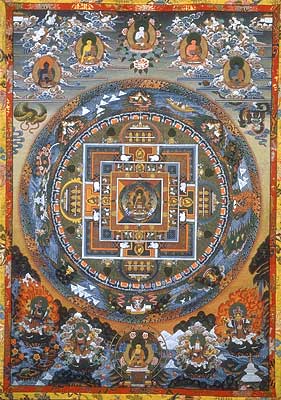|
|||||||
|
In various spiritual traditions, mandalas may be employed for focusing attention of aspirants and adepts, a spiritual teaching tool, for establishing a sacred space and as an aid to meditation and trance induction. The psychoanalyst Carl Jung saw the mandala as "a representation of the unconscious self," and believed his paintings of mandalas enabled him to identify emotional disorders and work towards wholeness in personality. Mandala type forms seem to also be prevalent throughout Christianity as well. The celtic cross, rosary, halo, aureole, oculi, Crown of Thorns and even the rose windows, prominent in many historic Cathedrals have many of the defining qualities of a mandala. In Islam, sacred art is dominated by geometric shapes in which a segment of the circle, the crescent moon, together with a star, represent the Divine. The entire building of the mosque becomes a mandala as the dome of the roof represents the arch of the heavens and turns the worshiper's attention towards Allah. Medicine wheels, created by the indigenous people of North America, were built from a variety of materials. From painted hides to stones placed in a circular pattern, they provided remarkably similar uses as the mandala found in Asia, along similar lines, dream catchers can also be viewed as a mandala. The ceremonial significance of each of these traditional methods of art are still relevant today. |
|||||||







 Mandala (Sanskrit
Mandala (Sanskrit